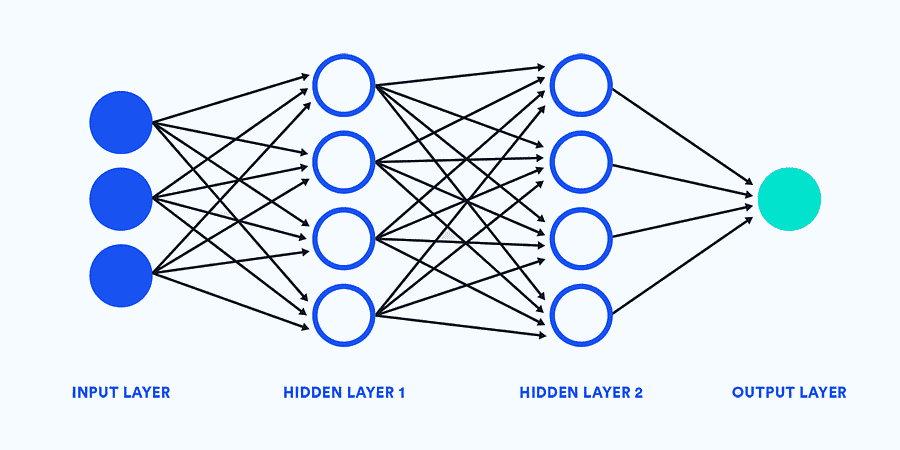The accuracy and efficiency of Deep Learning depend largely on the quality and quantity of the training data. And even if we are fully in the era of Big Data, the quantity of information available is sometimes insufficient for building deep learning models. This is where data augmentation comes in. So what is it? How does it work? What are the advantages and disadvantages? That's what we'll be looking at in this article;
What is Data Augmentation?
Data augmentation makes it possible to artificially increase the amount of data used by Deep Learning tools. The idea is to generate new data points from existing data, either by making minor modifications to the data, or even by using other machine learning models to amplify the data set.
As such, it’s important to distinguish between :
- Synthetic data: this is data generated artificially without reference to the real world. In most cases, they are produced by generative adverbial networks.
- Augmented data: this comes from original data, to which minor transformations have been added (such as translating textual data into another language, rotating an image or adding noise to a video). These transformations increase the diversity of the learning set.
In many cases, augmented data is the preferred choice for organizations, as it is more closely resembling reality. That said, in some cases, synthetic data may prove more relevant. Particularly when it comes to complying with the GDPR (more on this later).
Today, data augmentation methods are widely used in Deep Learning applications. For example, for object detection, image classification, image recognition, natural language understanding, semantic segmentation and so on.
How does data augmentation work?
To tell the difference between a cat, a dog, a horse or a dolphin, a Deep Learning model needs a multitude of photos representing these different animals. Above all, it needs a variety of images. That is, with different orientations, locations, scales, luminosities… It’s only when it’s able to accurately classify these different animals, whatever their orientation, size or lighting, that it’s truly operational. This is known as a convolutional neural network (CNN).
It is on this conclusion that the use of data augmentation is based. The idea is to manipulate data by adding, deleting or modifying various parameters, in order to provide the learning model with a highly varied set of training data. The more variables the dataset offers, the more the CNN is able to learn complex differentiation features.
So, in order to offer as many parameters as possible, the process of data augmentation begins. That said, the data augmentation technique varies according to the type of data used.

For visual data
This is where the data augmentation process is at its simplest. Here are the steps to be implemented:
- Introduction of input data into the data enhancement pipeline;
- Implementation of sequential steps for various augmentations, such as rotation, color modification (from grayscale to RGB),
- blurring and flipping (vertical and horizontal).
- Image processing at each sequential step, with assignment of a probability;
- Random verification of augmented results by a human;
- Use of augmented data in the AI training process.
For text data
Due to the complexity of natural language, data augmentation is rarer in the NLP field. That said, even if it’s more difficult, it’s not impossible to artificially enrich textual data. Here’s how the data augmentation process works:
- Easy data augmentation: for example, by replacing synonyms, inserting, swapping and deleting words.
- Back-translation: translated text from the target language is back-translated into its original language.
- Contextualized word embeddings: the idea here is to create relationships between words and sentences.
What are the advantages and disadvantages?
Advantages
Data augmentation is an inexpensive and effective method for overcoming many problems in the design of Deep Learning neural networks.
On the one hand, organizations are traditionally dependent on the process of collecting and preparing data.
Indeed, to build high-precision AI models, they need large quantities of qualitative data. But while data collection and preparation are indispensable to Deep Learning, this step is extremely time-consuming and costly. Conversely, data augmentation enables large quantities of qualitative data to be obtained in record time.
On the other hand, when companies collect and use personal data, they must comply with privacy regulations. This can limit the amount of data available and exploitable. Here, the generation of synthetic data makes it possible to obtain the volumes of data required, without infringing on individuals’ right to privacy.
Above all, by generating new data artificially, data augmentation enables deep learning models to use larger and more complete training datasets. This greatly improves their performance and the relevance of the results obtained.
Disadvantages
Despite all the benefits of data augmentation, it is important to be aware of the limitations of this method of data enrichment:
- The biases inherent in original data persist in augmented data, and may even be reinforced.
- Guaranteeing the quality of artificially augmented data sets also comes at a cost.
- The creation of synthetic data requires significant resources (skills, advanced applications, research and development, etc.).
Deep Learning training with DataScientest
Beyond data augmentation, the design of Deep Learning models requires a multitude of advanced technical skills (programming language, data engineering, AI, data visualization, …). This is precisely why Datascientest offers our Deep Learning training.










